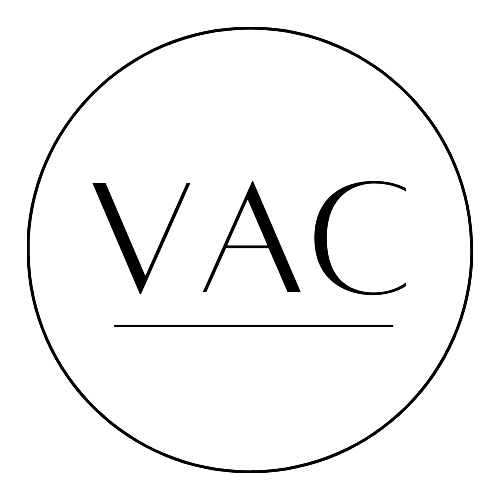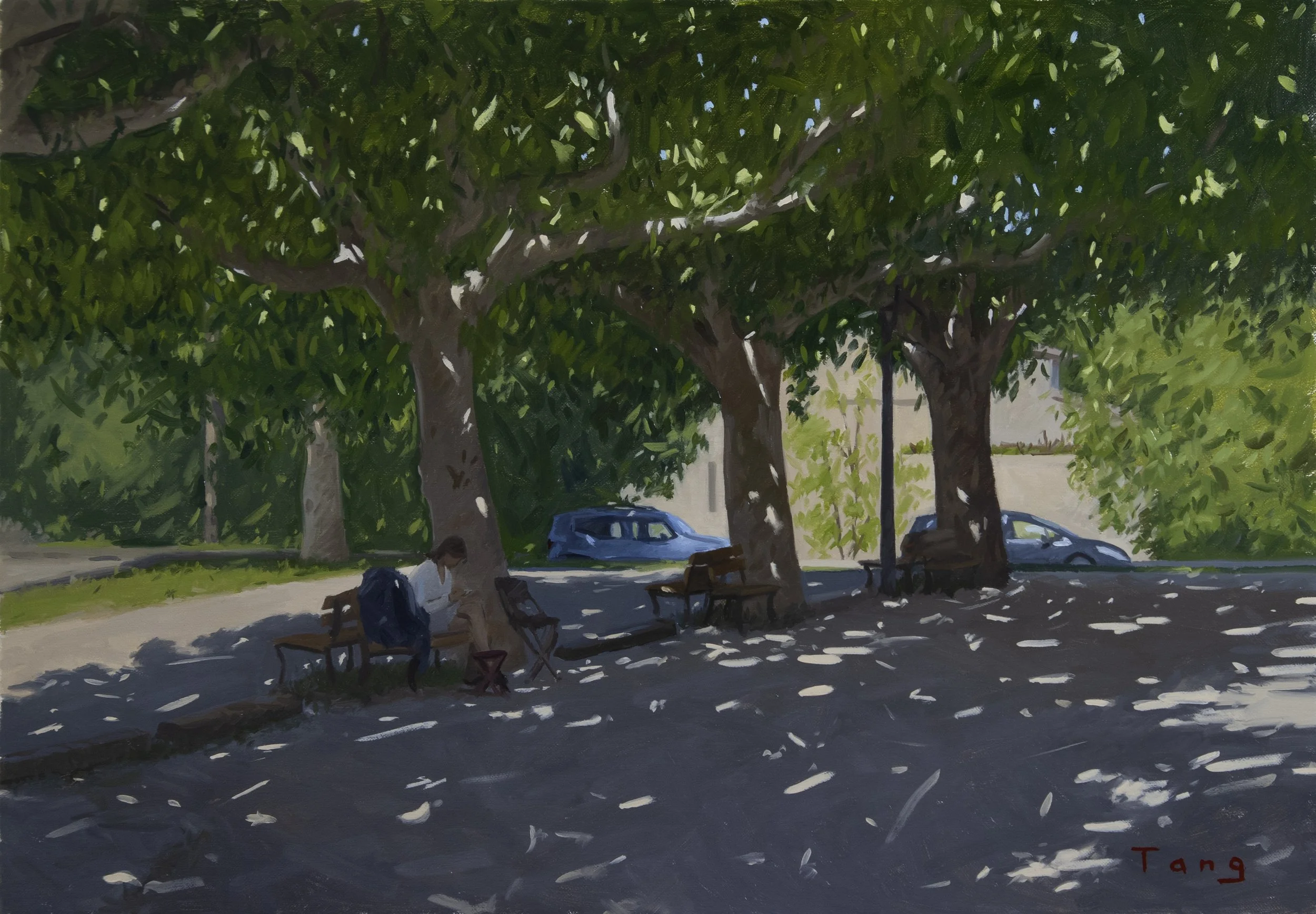Jonathan Tang: Landscapes of Reverie
Jonathan Tang is an artist based in Toronto, Canada, whose work is deeply shaped by the multicultural environment of his upbringing. His art offers both a tender reflection and a quiet critique of suburban life, while honoring the natural world around him. Through his paintings, Jonathan blends the personal with the universal, inviting viewers to explore memory, emotion, and meaning. Working primarily from observation, his creative process merges representational techniques with intuitive mark-making, capturing the nuances of time, place, and personal history. Jonathan currently works out of his home studio in Toronto.
How did your creative journey begin?
Painting first emerged as a way of processing a difficult period in my life. Without any formal skills at the time, I approached the surface abstractly, dotting and flicking the surface with paint — eventually, I found myself gravitating towards a more representational manner when this part of my life found a resolution.
I don’t have a formal background in fine art — however, I did take classes, read books, paint from observation, frequent museums, and everything else that comes with a self-directed study of painting. This intensive period of learning was foundational and rewarding because it instilled self-confidence and challenged my assumptions about change.
You initially studied music therapy before transitioning to painting. What inspired this shift, and do you find any connections between music and your visual art practice?
The transition away from music therapy is a bit uninspired and the reason leans more on the side of practicality — I realized during the final year of my program that the occupation wasn’t a good fit for me. Music therapy was my specialization, but I still had to complete a classical practicum — which I enjoyed far more!
In my own practice, music-listening can serve a few different purposes. Sometimes it’s to keep me stimulated while working on passages of a painting that are a bit monotonous, and other times it’s to reflect back what I think an image is communicating. I try to be careful about what kinds of music I put on — I’m usually able to notice when a particular sound is interfering with the painting process and when it supports it.
You emphasize working from observation in your creative process. Can you walk us through how you begin a painting—from initial observation to finished piece?
Being in contact with the object of my painting is essential in my practice. Even though this way of working was initially informed by traditional painting with representational priorities in mind, conceptual outcomes have become more important in the work I’m currently creating. I now see painting from life as the first point of dialogue between perception and interpretation.
The initial study from observation, along with photographic references, functions as a starting point for the finished painting. I make written notes and journal my thoughts afterwards, allowing for memories and unexpected connections to emerge on paper — this process of reflection is crucial for the significance and context behind each work to reveal themselves in both personal and artistic dimensions.
While I do refer to the observational study and photographic references while creating the studio painting, I allow for a degree of spontaneity. These are unplanned decisions that heighten the experience of painting and push the work further. This often involves moving opposite to naturalistic conventions, which in turn, creates a stronger sense of tension and ambiguity in the image.
What does a typical day in the studio look like for you, and how has your art practice grown or changed?
When I’m developing a body of work in the studio, I usually paint in 4-hour increments each day with a short break in the middle — any longer, and I find that I’m not as sharp as I want to be. If I’ve exhausted myself from painting, I like to keep myself engaged in other ways, like reading, writing, or listening to a podcast or artist talk. Outside of painting, I like to take frequent walks throughout the day to keep myself feeling refreshed.
As my practice shifts away from the traditional realm of painting to a more contemporary one, I’ve discovered how important it is to be able to look inward and communicate the ideas that drive my work. The discourse that I was surrounded by in the earlier stage of my painting career revolved around art history, technique, and the formal aspects of painting. I’ve taken a few steps away from this context in my search of creating something personal.
Which experiences have impacted your work as an artist?
Artist residencies have been transformative for my work in ways that I didn’t expect. While the experiences of painting in unfamiliar environments strengthened my skills as a painter, I found that the conversations and relationships that formed through sharing a space together catalyzed the direction I’m currently moving towards.
I’ve been working with a coach who has been instrumental in helping me explore and deepen my practice — working through psychological barriers, holding space for my ideas, and offering helpful resources are some of the many things that she’s been able to do in our sessions. She’s been an incredible asset.
How has social media impacted your work?
My impression is that social media can be tricky for artists since it has the potential to be a powerful source of validation. Strong reception to our images can feel rewarding, but fleeting — it can feel like a hedonistic treadmill at times, so I do my best to separate how an image might be received online and how I feel about its merits. On a more positive note, I’ve found that social media has been a great way to connect with artists I admire and form new relationships.
Are there any artists, past or present, who have particularly influenced your style or approach to painting?
During my formative years of painting, I studied 19th century Impressionist painters for their methods and techniques of direct painting. Out of these artists, John Singer Sargent was one that I reviewed the most — the brushwork, the way in which he simplified forms, the virtuosity of his technique — these were aspects of painting that I wanted to integrate into my own approach.
As for living artists, Marc Dalessio was a major influence on the way I approached painting outdoors — composition, handling changing light conditions, handling of materials, etc. — he’s been incredibly generous with the amount of information he’s made available. Lately, I’ve been looking at Jonathan Wateridge’s paintings a fair amount. His story of transitioning from realism to a much more abstracted way of approaching figurative painting has been a good reminder of how non-linear an artist’s career can look like. Brian Rego is another artist I’ve been looking into. As a result, I’m exploring more deeply about the role of personal experience in my paintings. Nowadays, I find myself looking at artwork that I wouldn’t necessarily aim to produce or emulate, as I used to previously. I was preoccupied with technical excellence, but I eventually grew tired of just painting representationally — I eventually developed a hunger to make something that felt lived, and conceived from personal experience.
Website: jtangstudio.com
IG: @jonyanagi
Published on March 13, 2025






